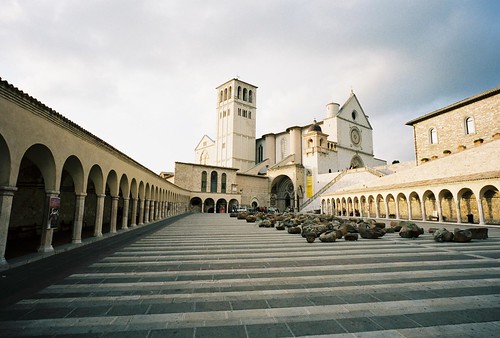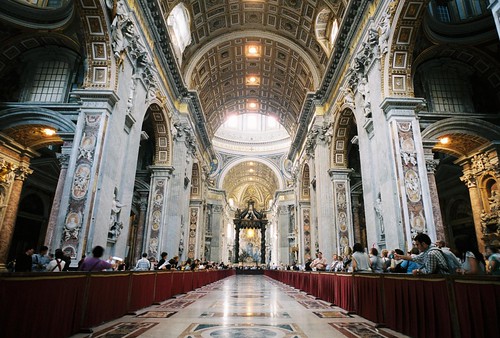Nothing makes people look at you like you are crazy than having them see that you still shoot film. People cannot fathom why one might still want to use film. We all know the advantages of digital:
--You get a instant results
--There is no cost or time to develop.
--You can switch ISO settings from picture to picture.
1. Ability to upgrade film as film technology improves.The quality of film overall has improved tremedously even in the last 20 years, not to mention the last 50 or 80 years. I put modern film in a 50 year old camera and get outstanding images. Just because I'm using an older camera doesn't mean I am required to use old film. As digital technology improves, you must buy a new camera to take advantage of it.
2. Low cost choice to shoot wide angles.
Since the sensor size of a DSLR is smaller than that of 35mm film, all images are effective croped in the center. So a 24mm focal length gives a similar field of view to a 35mm and 15mm lens acts like a 22 mm focal length.
As lenses get wider they are harder to design and are often slower. So if you want a the same field of view as 35mm focal length, you need to get a more expensive and slower lens. A 35mm f/2 lens is not very expensive. To get the same field of view, you will need a 24/2, when would be expensive if not impossible to find, or a 24/4 which is substaintailly slower. Your other alternative is to get a full frame DSLR, which start at $3000 for the body alone.
To get to 35mm:
Digital = Nikkor 24mm f/2.8 + Nikkor D40 = $360 + $400 = $760
Film = Voigtlander 35mm f/2.5 + Bessa R = $240 + $200 = $440
To get to 21mm:
Digital = Nikkor 14mm f/2.8 + Nikon D40 = $1630 + $500 = $2130
Digital = Nikkor 20mm f/2.8 + Nikon D700 = $560 + $2600 = $3160
Film = Zeiss 21mm f/2.8 + Bessa R2m = $1100 + $560 = $1660
Film, used = Voigtlander 21mm f/4 + Bessa L = $300 + $100 = $400 (While used and a stop slower, it is still an available choice).
To get to 15mm:
Digital = Nikkor 14mm f/2.8 + Nikon D700 = $1630 + $2300 = $3930
Film = Voigtlander 15mm f/4.5 + Bessa R4m = $400 + $650 = $1050
3. Low cost choice for lower volume shootersDigital = A Nikon D40 with kit lens = $500
Film = A Vivitar V3800N with kit lens = $170.
Film, used (keh.com) = Pentax MZ30 with 28-105 lens = $77
I can buy and develop Kodak Gold film for $6.50 for a roll of 36. That means that I can take a roll a month for 5 years, equal the cost of the D40.
4. Negative film has better exposure latitudeThe exposure latitude for digital is limited. Overexposure leads to blown out highlights, especially with long exposure night shots. Negative film has much greater exposure latitude.
5. Low cost choice for large printsWhile 10 MP can print a quality 8x10, it still can't get much larger. 35mm film can reliably go to at least 11x14, while medium format can go significantly larger. A medium format digital SLR costs the same as a nice car, while a quality medium format film camera can be bought for $200.
6. You still can get a digital image from film.I don't shun the digital world. I scan a lot of my photos. An Espon V500 goes for $150.
7. The digital image scanned from film can improve as technology improves. I've been scanning photos I took 10 years ago. The resulting digital image. If I had taken a digital photo, I would stuck with the digital image.
8. Paying a small amount for each image may make you shoot with more care.This is more of a personal choice of how I act with a digital camera and not everyone may not feel the same. Since a digital shot is "free", I often tend take a very high amount of photos. I get 500 poorly composed photos of the same thing. All the photos stay on the camera and I never delete them or print them. It's like I take a machine gun approach when a sniper's approach is favorable.

















